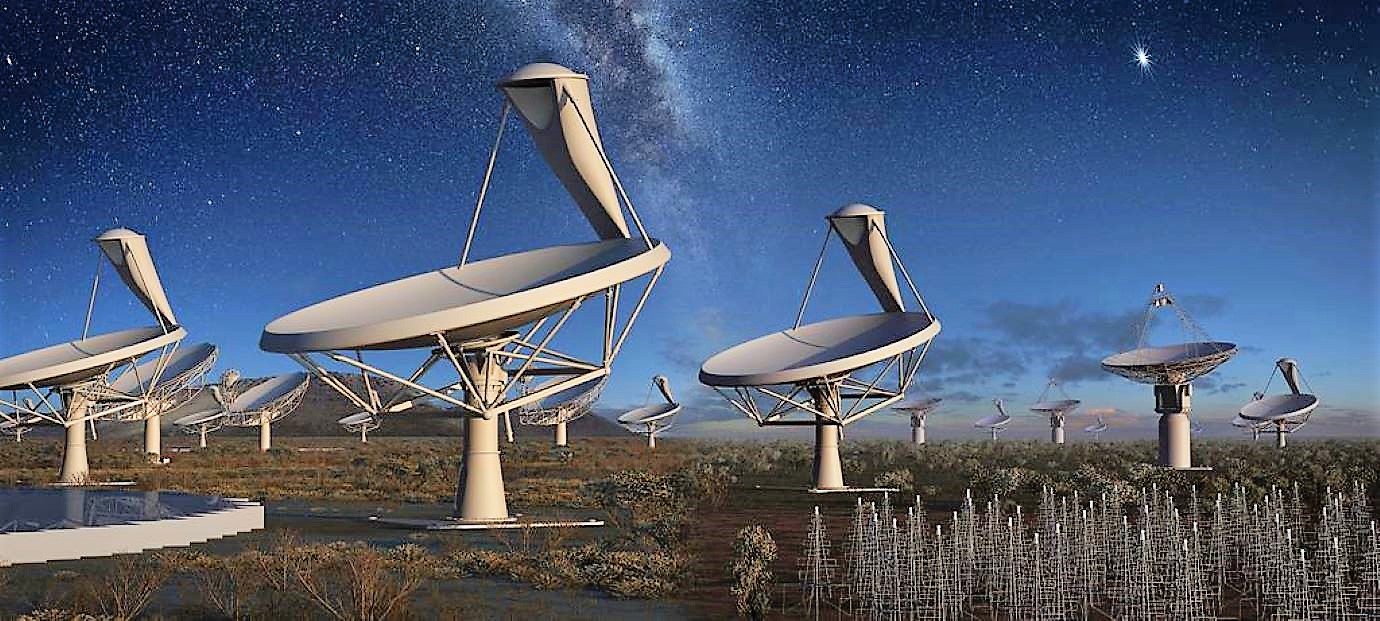Australia started constructing its portion of the Square Kilometer Array, a system that will become the world’s largest radio telescope.
World’s Biggest Low-Frequency Radio Telescope
The international Square Kilometre Array (SKA) project is underway in a phased timeline to build the world’s largest radio telescope, with eventually over a square kilometer (1 square kilometer = 247.105 acres) of collecting area.
The Australian SKA-Low will revolve around 131,072 antennae “trees” in the country’s western Wajarri country. The array will focus on low-frequency signals and is expected to be eight times more sensitive than existing telescopes and map the cosmos about 135 times faster.
Construction of the SKA-Mid array is located in the Karoo desert in South Africa and is already underway. The SKA-Low array, in Western Australia north of Perth, took 30 years of preparations and a year and a half of preconstruction work that involved selecting the right companies for the job.
“The SKA project has been many years in the making,” Catherine Cesarsky, the chair of the SKAO council, who attended a ground-breaking ceremony at the South African site, said in a statement. “Today, we gather here to mark another important chapter in this 30-year journey that we’ve been on together. A journey to deliver the world’s largest scientific instrument. After 18 months of intense activities around the world, we are starting construction of the SKA telescopes.”
The project will survey the sky faster and will exceed the image resolution quality of the Hubble Space Telescope. The telescope will be able to image very large swaths of the sky.

What is The SKA-Low?
As one of the largest scientific endeavors in history, the SKA will bring together a wealth of the world’s finest scientists, engineers, and policymakers to bring the project to fruition.
The SKA-Low array in Australia will rely on 131,072 dipole antennas to detect radio waves of frequencies between 50 to 350 MHz.
The telescope system requires two supercomputers (25% more powerful than the best supercomputer in the world in 2019) and network technology where data will eventually flow at a rate 100,000 times faster than the projected global average broadband speed in 2022, according to CISCO.
Building the telescope will require laying down a vast infrastructure of power and fiber, which will connect and support antennas arranged in spirals, with a diameter of nearly 2,000 miles.
Organizations from 14 countries are members of the SKA Organisation. They include Australia, Canada, China, France, Germany, India, Italy, New Zealand, Spain, South Africa, Sweden, Switzerland, The Netherlands, and the United Kingdom.
Breaking New Ground
The antennas are extremely sensitive, so the arrays must be located in remote locations where conventional radio receivers are prohibited to avoid signal disturbance.

The land in the vicinity of arrays is inhabited by indigenous communities. In Australia, they installed the antennas on the Wajarri Yumaji land.
The antenna project will be completed by the end of this decade, but astronomers hope to use parts of the antennas as soon as construction is completed.
The telescope hopes to serve astronomers for at least 50 years.
Get the news you need at It’s On News.


